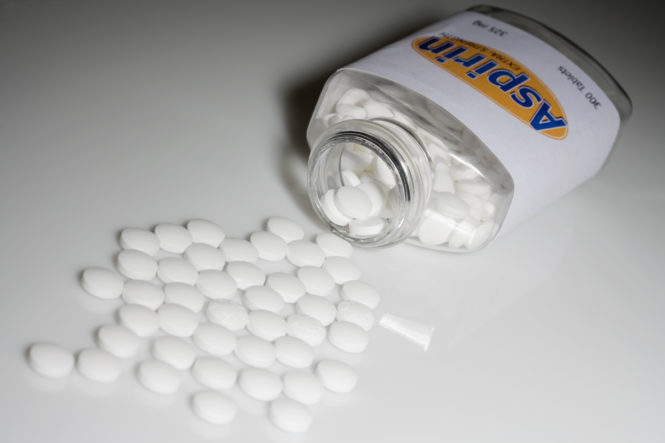Introduction
You can solve triple acid-base problems with basic arithmetic and straightforward logic. As an example, let’s work through the following rather classic triple acid-base problem:
An afebrile, atraumatic 26-year-old male with no past medical history is brought to the emergency department because of a three hour history of altered mental status, vomiting and vertigo. The physical examination is positive only for somnolence and tachypnea.
Relevant serum chemistries are:
- Na+: 143 mEq/L
- Cl–: 100 mEq/L
- Serum bicarbonate [HCO3–]: 16 mEq/L (normal = 24 mEq/L)
The arterial blood gas (ABG) reveals:
- pH: 7.50 (normal = 7.40)
- pCO2: 20 mm Hg (normal = 40 mm Hg)
- HCO3–: 15 mEq/L (normal = 24 mEq/L)
What are this patient’s acid-base disorders?
Step 1: calculate the anion gap
When solving acid-base problems, the first step is always to calculate the anion gap:
Anion gap = [Na+] – [Cl–] – [HCO3–]
Note that you don’t need an ABG to calculate the anion gap. In fact, an ABG can’t tell you whether there is a high anion gap metabolic acidosis. Only the serum electrolytes can tell you that.
Before proceeding to the next step, however, please pay attention to how high above normal this patient’s anion gap actually is because you will need this number for the steps that follow. This patient’s anion gap is too high by 16 points. It’s supposed to be 11, but it is 27, so it is too high by 16 points (27-11 = 16).
Remember the number 16 because you will need it for the next two steps.
Step 2: see if the serum bicarbonate (HCO3–) is dropped in proportion to the degree to which the anion gap rose
Recall from the previous step that, in this case, the anion gap is too high by 16 points (27-11 = 16). Therefore, you should expect the serum bicarbonate to be similarly 16 points below normal.
A normal serum bicarbonate is 24 mEq/L. (That’s just something you absolutely need to have committed to memory!). In any event, since the patient’s anion gap was too high by 16 points, the patient’s bicarbonate should be similarly low by 16 points. So you’d expect the serum bicarbonate to be 8 mEq/L (24-16 = 8).
Here, however, the bicarbonate is 16 mEq/L, which is 8 points higher than the expected 8. A higher than expected bicarbonate in a patient with no past medical history suggests a metabolic alkalosis. So this patient also has a metabolic alkalosis on top of his high anion gap metabolic acidosis.
Congratulations! So far, you’ve solved two thirds of this patient’s triple acid-base disorder. You know, again without even looking at the ABG (!), that this patient has:
(a) a high anion gap metabolic acidosis (from Step 1); and,
(b) a metabolic alkalosis (from Step 2); and,
(c) another yet-to-be-identified acid-base disturbance (because I told you it was going to be a triple acid-base disorder!).
Let’s go on to Step 3.
Step 3: look at the arterial blood gas and see if the partial pressure of carbon dioxide (pCO2) is dropping in proportion to the drop in the bicarbonate level
Look back at the ABG above and focus on the pCO2. Notice that the pCO2 is too low by 20 points. (A normal pCO2 is 40 mm Hg, and this patient’s pCO2 is 20 mm Hg. 40-20 = 20.)
Had the respiratory compensation been appropriate, the pCO2 should have dropped by the same number of points as the bicarbonate. Why? That’s just how it is. (If you’re not convinced, just plug the numbers into Winter’s formula and you’ll get exactly the same result.) In any event, recall that this patient’s serum bicarbonate dropped by only 8 points (it is 16, with normal being 24), so his pCO2 should have dropped by only 8 points as well. Therefore, his pCO2 should have been 32 mm Hg (40 – 8 = 32). However, this patient’s pCO2 is lower than the expected 32. It is 20. A too-low pCO2 means that there is a respiratory alkalosis going on here as well.
We therefore now know that this patient’s triple acid-base disorder is:
(a) high anion gap metabolic acidosis (from Step 1),
(b) metabolic alkalosis (from Step 2); and,
(c) respiratory alkalosis (Step 3).
Summary
Now that the (rather straightforward!) arithmetic is done, it’s time to look back at the patient history and physical examination to see if your laboratory-based acid-base diagnosis fits the clinical scenario. Recall that this was an afebrile, atraumatic 26-year-old male with no past medical history who presented with altered mental status. This history alone suggests a likely toxic ingestion and therefore the possibility of a high anion gap metabolic acidosis. He had been vomiting. That fits with metabolic alkalosis. He was tachypneic on examination. That fits with respiratory alkalosis.
And finally, he was altered and vertiginous. That fits with a final clinical diagnosis of salicylate poisoning with a characteristic triple acid-base disturbance of (1) high anion gap metabolic acidosis, (2) metabolic alkalosis, and (3) respiratory alkalosis.
Reference
- Kurtz, Ira, MD, Acid-Base Case Studies (2004, page 96, Case No. 7)


Leave a Reply